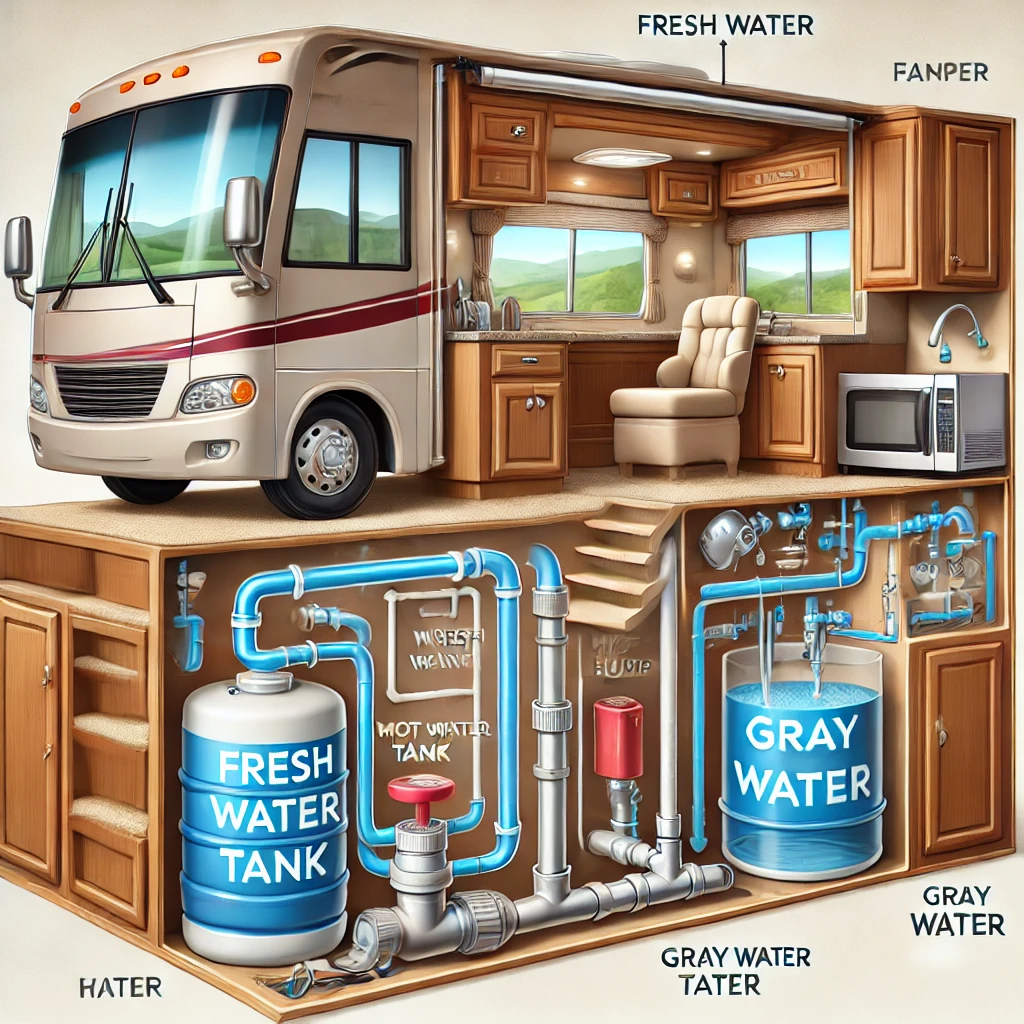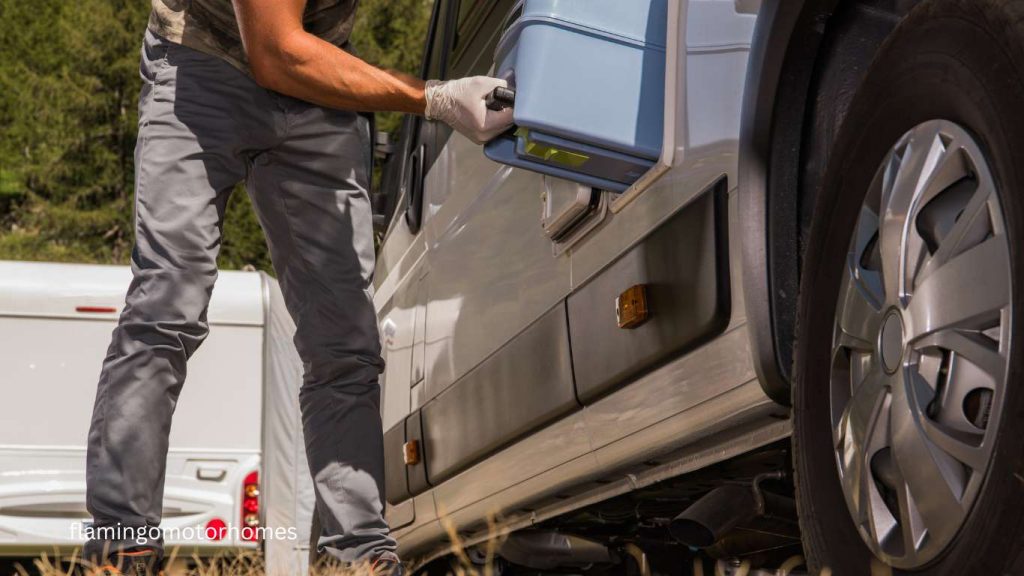The reason why Motor home toilet work totally different from others is by understanding how Motorhome toilets are designed for efficient waste management, combining convenience and functionality. Here’s a breakdown of how these systems work.

Overview of the Motorhome Water System
A motorhome’s water system is essential for comfort on the road. By understanding its components and performing regular maintenance, you can ensure a steady supply of clean water and an efficient waste management system, making every journey smooth and enjoyable.
Components of a Motorhome Water System
Motorhome water systems consist of three main parts:
- Fresh Water System: Supplies clean water for drinking, cooking, and washing.
- Grey Water System: Collects wastewater from sinks and showers.
- Black Water System: Stores waste from the toilet in a separate holding tank.

Key Tips for Maintaining Your Motorhome Water System
- Regularly Check for Leaks: Inspect pipes, hoses, and tanks for leaks to prevent water damage.
- Use RV-Safe Products: Always use RV-safe toilet paper and tank treatment solutions to protect your system.
- Sanitize the Fresh Water Tank: Clean the fresh water tank at least twice a year to keep your water supply safe.

Types of Motorhome Toilets
Motorhome toilets come in several types, each with unique mechanisms:
- Gravity Flush Toilet: The most common type, similar to household toilets, relying on gravity to send waste into a holding tank.
- Cassette Toilet: Compact and easy to empty, this type uses a small, removable waste cassette.
- Macerating Toilet: Equipped with a blade that grinds waste, allowing for flexible tank placement in the RV.
- Composting Toilet: Separates liquid and solid waste, ideal for eco-conscious RVers who want to reduce water usage.
How Motorhome Toilets Operate
Motor home operates by keeping following steps in mind;
Step 1 – Flushing the Toilet
When you flush a motorhome toilet, water from an onboard freshwater tank flows into the bowl. Unlike home toilets, motorhome toilets use minimal water to conserve resources.

Step 2 – Waste Storage
Waste is directed to a black water holding tank, usually located under the motorhome. This tank is separate from the grey water tank, which stores water from sinks and showers.

Step 3 – Waste Tank Management
Motorhome toilets rely on the black water tank to store waste until you can empty it. Most tanks have level indicators, letting you know when it’s time to dump the waste.
Emptying the Black Water Tank
Step 1 – Find a Dump Station
Locate a designated RV dump station, commonly found at campgrounds, travel centers, and rest areas.
Step 2 – Connect the Sewer Hose
Attach a sewer hose to the black water tank’s outlet. Make sure it’s securely fastened to avoid spills.
Step 3 – Dump the Waste
Once connected, open the valve to release the waste into the station’s disposal system. Afterward, rinse the tank with clean water to reduce odors and buildup.

Key Tips for Maintaining Your Motorhome Toilet
- Use RV-Safe Toilet Paper: Regular toilet paper can clog RV systems. Always choose RV-safe options.
- Add Holding Tank Chemicals: These help break down waste and control odors.
- Flush Regularly: Keeps the system clear and prevents buildup.
Efficient and Convenient Waste Management
Motorhome toilets are designed for efficiency, using limited water and storing waste until you reach a disposal station. By following best practices, you’ll keep your system functioning smoothly, ensuring a pleasant and hassle-free experience on the road. Hope this article will definitely helps you to know the that how do a Motorhome toilet works efficiently.
More guidelines or any further related information will be available on Flamingo Motorhomes

